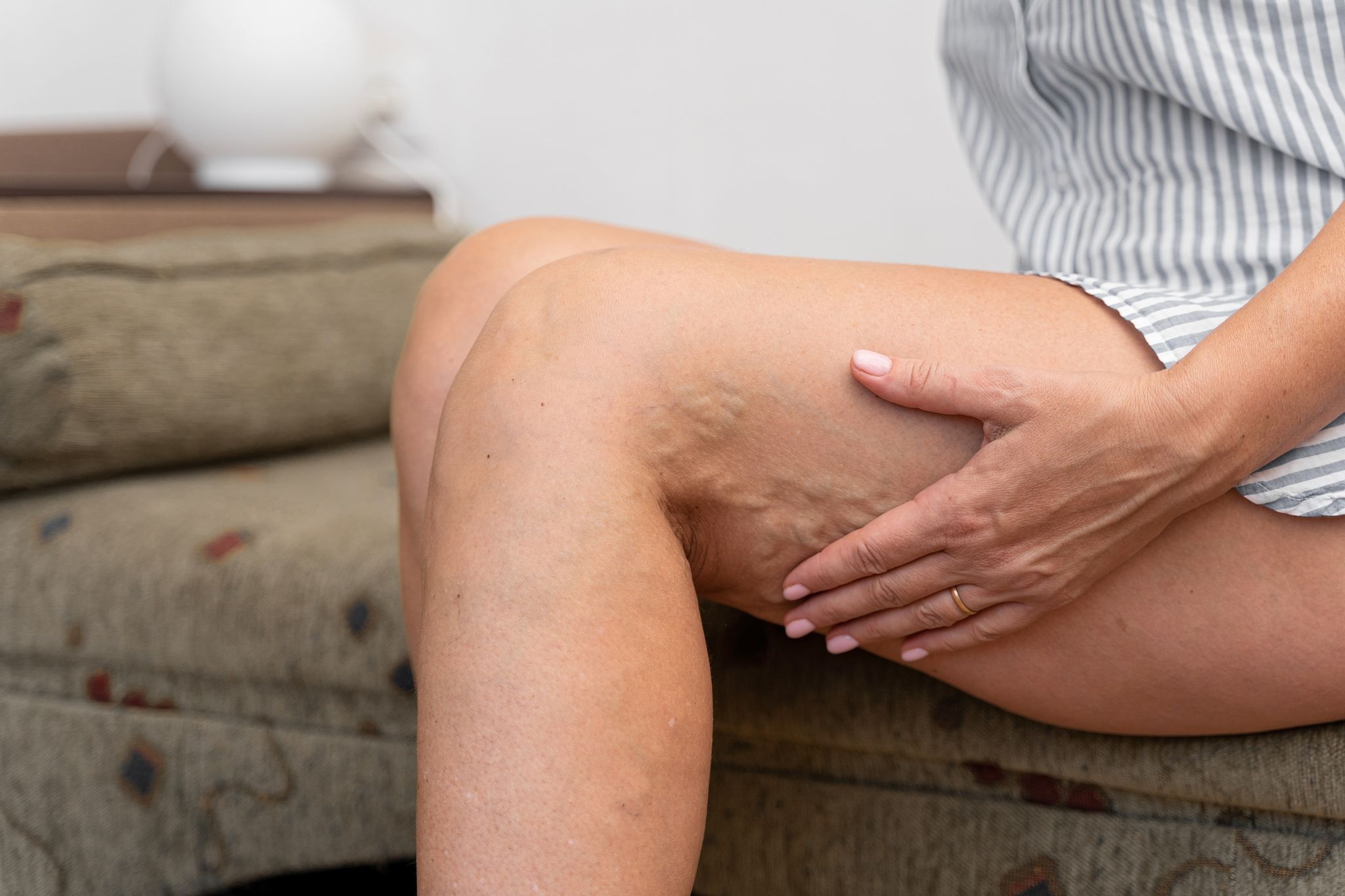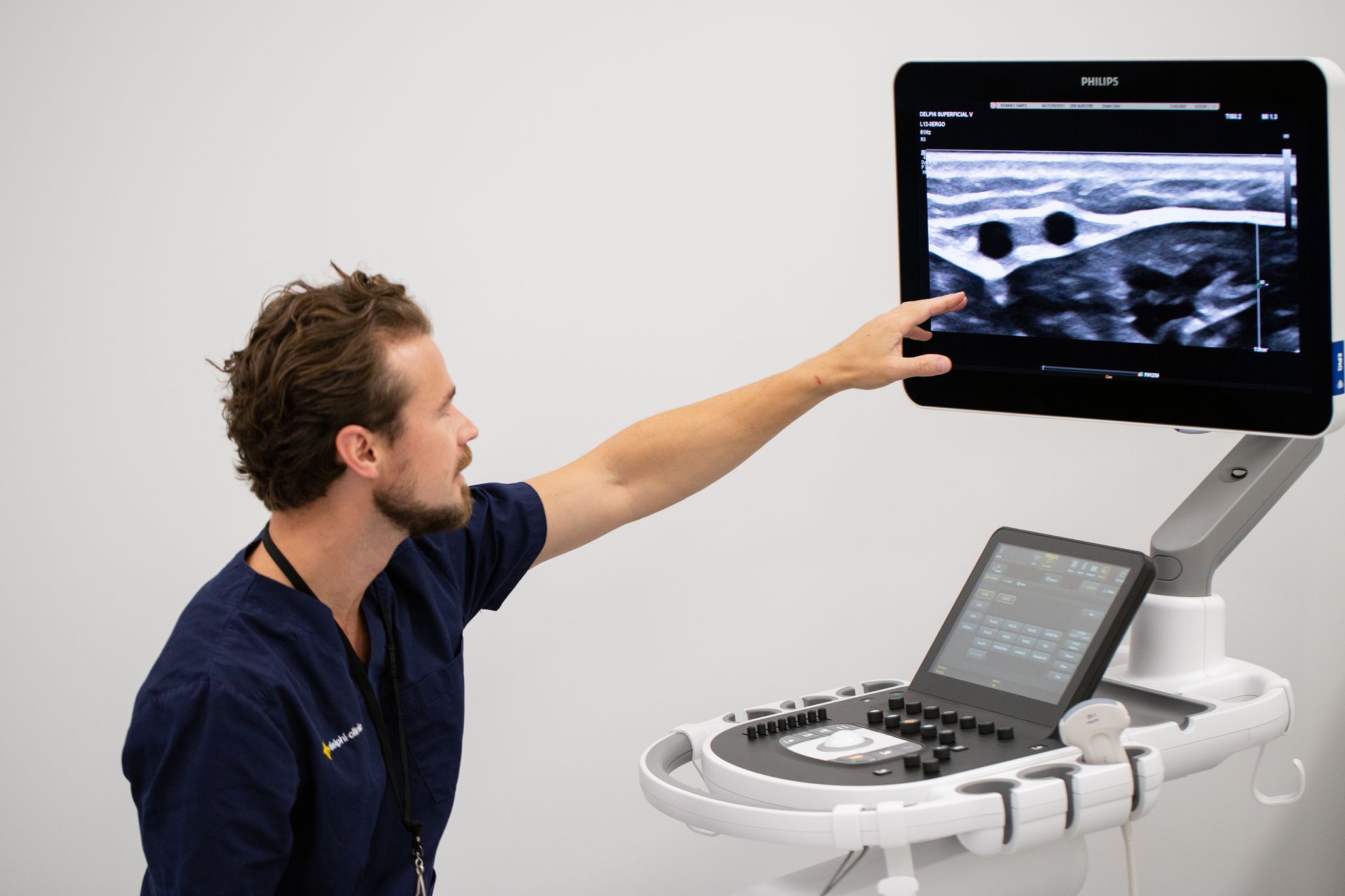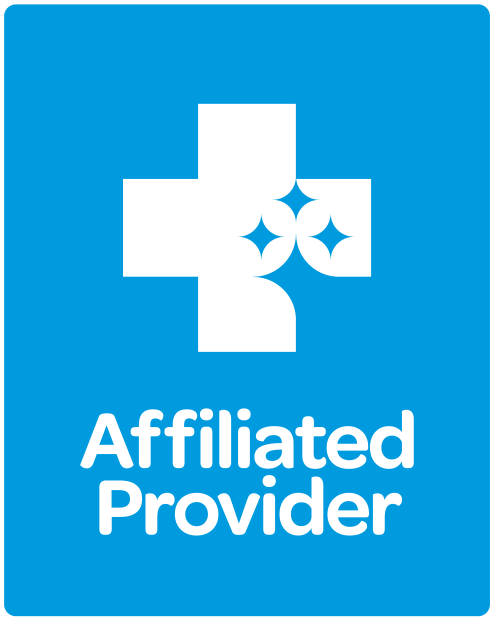Vein Disorders
Why am I experiencing uncomfortable symptoms in my legs?
Vein conditions become increasingly common as we get older. You may have noticed discomfort, swollen or itchy legs. Perhaps your legs cramp or you experience a feeling of restlessness. Your veins might look prominent and their appearance has begun to impact your confidence in day to day life. Perhaps you’ve recently had a baby and you’ve noticed symptoms in your legs that weren’t previously there. There are many different types of vein issues, and whether your concern is medically driven, or aesthetically driven, Delphi Clinic can help you restore health and confidence. There is now a more effective and less invasive way of treating veins than the traditional method of surgically stripping them. Delphi Clinic offers the latest technology and methods for treating veins that are minimally-invasive, enabling you to get back to your routine immediately with no downtime and minimal discomfort.
Varicose Veins
Varicose veins are swollen and enlarged veins and they most commonly affect the legs causing discomfort and pain. They also can cause patients’ significant distress by their appearance, in some cases prohibiting their confidence in day to day activities. Statistically they are more likely to occur in women than in men and they do tend to run in families. In fact if you have one parent who suffers from varicose veins, there’s a 40 percent chance you may develop them also. They are often blue or purple in appearance and are most likely to become apparent between 30 and 60 years of age. Pregnancy can increase your risk for varicose veins. Other risk factors include jobs that have you standing for long periods of time (retail positions, cabin crew, playing sports) where gravity increases the strain on your veins.

How do they occur?
Varicose Veins are caused when the valves in your legs responsible for blood flow stop working correctly. Their insufficiency allows blood to back flow which results in blood pooling in your veins, causing them to stretch and increase in size. They most commonly occur in the superficial veins in your legs, specifically affecting vein junctions (where different veins join together) and they are commonly found in the upper thigh, behind the knee, and in the calf muscle. Women can experience varicose veins in their groin due to pregnancy.
Over time, if varicose veins are left untreated, they can cause further complications including the development of varicose ulcers – where the skin struggles to heal. Patients may also suffer increasing appearance concerns such as dark pigmentation forming over their skin. Further complications of venous insufficiency can occur including the development of Deep Vein Thrombosis (DVT) whereby a clot in the leg develops – while this isn’t directly linked to varicose veins, it is a significant complication of vein insufficiency to be aware of.
How do we treat varicose veins?
Thankfully there is now a less invasive and more effective treatment of varicose veins than the traditional method of stripping them through surgery. Modern technology has enabled the development of RFA (radiofrequency ablation) which Delphi Clinic has found to be the most effective and most comfortable way for patients to have their varicose veins treated. It is a walk in, walk out treatment, enabling you to get back to your life immediately post procedure with minimal discomfort.
Radio Frequency Ablation involves inserting a catheter into the vein then delivering a source of heat, closing off the vein and stopping the flow of blood. During RFA treatment, radio frequency energy is administered in 20-second bursts directly into the vein through a tiny catheter. Rather than clotting the blood, the radio frequency energy targets the collagen in the vein wall, causing it to shrink and prevent blood from circulating through that vein. No general anaesthetic is necessary and the entire procedure can be done with local anaesthetic.
Delphi Clinic also uses Ultrasound Guided Sclerotherapy (UGS) as a method to treat varicose veins. This is a procedure done under ultrasound guidance and involves identifying and mapping incompetent veins in the legs (veins that are no longer moving blood back up your leg). These veins are then injected with a sclerosant which closes the faulty vein down. Over time the “treated” abnormal veins are absorbed by the body allowing for more efficient blood flow from the healthy veins that remain. Because the blood is now able to flow through deeper veins, it results in a more effective venous system, reducing varicose vein symptoms and improving their appearance. Delphi Clinic generally uses a combination of RFA and UGS to treat varicosities.


Spider Veins
As their name suggests, spider veins are veins that are bluish or purplish in colour and appear like a “web” on the skin’s surface. They are often an indicative sign of a greater vein problem, such as varicose veins and in many cases these varicose veins won’t yet be visible. Delphi Clinic treats spider veins by offering microsclerotherapy, where a tiny needle injects these veins with a sclerosant which causes the veins to close down, and eventually be absorbed by the body. We perform this treatment only after an ultrasound scan has confirmed that there are no hidden large reticular veins or varicose veins underling the patch of spider veins. If there are larger refluxing veins connecting to the visible spider veins then more formal treatment with ultrasound guided sclerotherapy (UGS) and radiofrequency ablation (RFA) is required.
Ulcerations/ Vein Ulcers
A venous leg ulcer can be particularly bothersome and painful for patients. It’s a wound on your leg that takes a long time to heal, or can’t heal, due to poor blood circulation. It usually develops on the inside of your lower leg, above your ankle. Often an ulcer will occur due to a minor injury, but because of insufficient blood circulation, it cannot heal.
They can feel painful, itchy and they can cause swelling and discomfort. They can be weepy and stingy and can really affect day to day activities for patients. They require regular dressing changes at a huge cost to the public health system and they cause many patients’ significant distress.
Venous leg ulcers result from poor vein function. Without addressing the poorly functioning veins within your legs, in many cases, you cannot fix the ulcer itself. If the valves that push the blood from your legs and feet back towards your heart become damaged, the blood pools in your veins causing pressure symptoms and skin changes, which can be accompanied by the development of an ulcer or varicose eczema. The best way to treat a venous ulcer is by using radiofrequency ablation (RFA) and/or ultrasound guided sclerotherapy (UGS) to treat the underlying vein disorder. This will then be followed by regular dressings and the use of compression stockings.
You are more prone to venous leg ulcers if:
- You are overweight
- You have a history of varicose veins
- Are aged over 60
- Have a history of DVT (deep vein thrombosis)
Venous Eczema
Venous Eczema is a common form of eczema/dermatitis that affects one or both lower legs. Associated with poor vein function, it is also commonly known as gravitational dermatitis. It becomes particularly prevalent in middle aged to older patients and it is suspected to affect the 20% of people over 70 years of age. It can present as itchy, red, blistered and crusty skin, with orange and brown pigmentation. It is commonly treated with oral antibiotics or a topical steroid. However, these treatments can prove to be insufficient if varicose vein disease is present. An ultrasound will help determine if there is an underlying vein disorder that needs to be treated before recovery can commence.
Reticular Veins
Many people have heard of spider and varicose veins, but have not heard of reticular veins. Reticular veins are smaller in size than varicose veins and they do not protrude above the skin in the way that varicose veins can. They are mainly blue or purple in colour and they are commonly found on the inner thigh, back of the knee and on the legs and ankles. Despite them being less obvious than varicose veins, their appearance can still affect peoples’ confidence wearing shorts, skirts or any clothing that reveals their appearance. From a symptom perspective, patients can feel pain or discomfort in the areas surrounding these veins. Reticular veins are “feeder” veins and tend to feed clusters of spider veins, filling them with excess blood. Delphi Clinic treats reticular veins with ultrasound-guided sclerotherapy (UGS), where a sclerosant (a chemical irritant) is injected into the vein via a tiny needle which causes the entire vein to collapse. In due course the treated vein is absorbed into the body causing symptoms to ease and appearance to improve.

Lipodermatosclerosis
Lipodermatosclerosis is a chronic inflammatory condition which is caused by poor vein function. It is common, affecting middle-aged and older people. It is more common in women and is associated with immobility and being overweight. It presents with pain, itching, aching and a feeling of heaviness or swelling in the lower legs. And it can commonly mimic cellulitis. In the acute phase signs may be localised to one legion, but in many cases it’s more widespread. It is mostly located on the midline of the shin area.
Lipodermatosclerosis can be treated with a combination of exercise, weight reduction, compression stockings, leg elevation and radio frequency ablation (RFA) and Ultrasounded Guided Sclerotherapy (UGS)
Swelling in the legs, Oedema
Oedema is fluid retention. It is caused when blood vessels leak fluid into the lower leg, causing a swollen appearance. You may notice indents occur and remain on your leg, when you remove your socks, and that your feet and legs become increasingly swollen after long periods of standing. There are several underlying reasons that fluid may be leaking into your leg, including:
- Venous insufficiencies. This is when veins in the leg begin functioning poorly or not at all, not allowing the correct distribution of blood flow. A vein insufficiency can obstruct the ability for blood to flow up the leg towards the heart, causing fluid to leak into the lower leg causing swelling.
- It can also signify a DVT (deep vein thrombosis) which can result in a clot in the leg which can obstruct blood flow up to the heart
- It can also be a sign of heart, liver or kidney failure
- A symptom of pregnancy
- Or a side effect to a raft of medications including anti-inflammatories, blood pressure medications or steroids
If it is deemed that your Oedema is caused by venous insufficiencies (this can be determined by ultrasound to assess the underlying vein function), Delphi Clinic can provide reprieve by procedures including Radiofrequency Ablation (RFA) and Ultrasound Guided Sclerotherapy (UGS). Both of these treatments are minimally invasive, utilise local anaesthetic and are generally very comfortable for patients. It’s important to realise that while vein treatments can help improve leg swelling, it is worth investing in a healthy lifestyle to further enhance your results including:
- weight management
- maintaining an active lifestyle. The more you physically move, the more your body is encouraged to pump blood around your body
- Wearing compression stockings
- Massage
- Leg elevation, whereby the foot is placed above the midline of the body allowing it to drain more efficiently.


